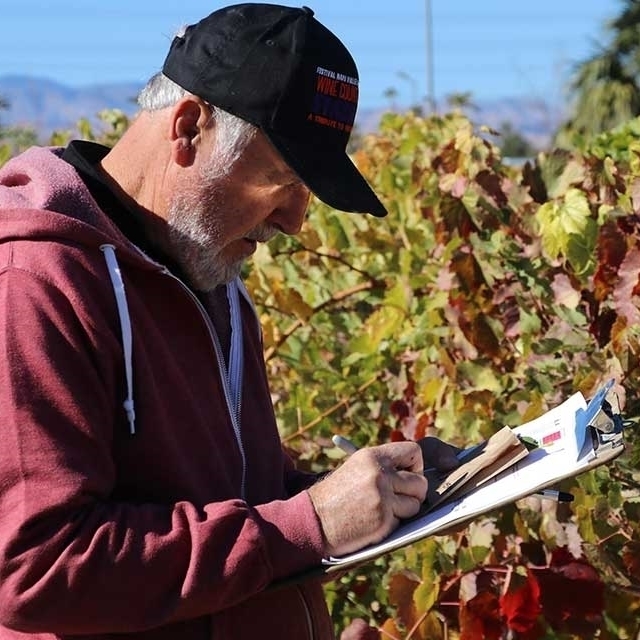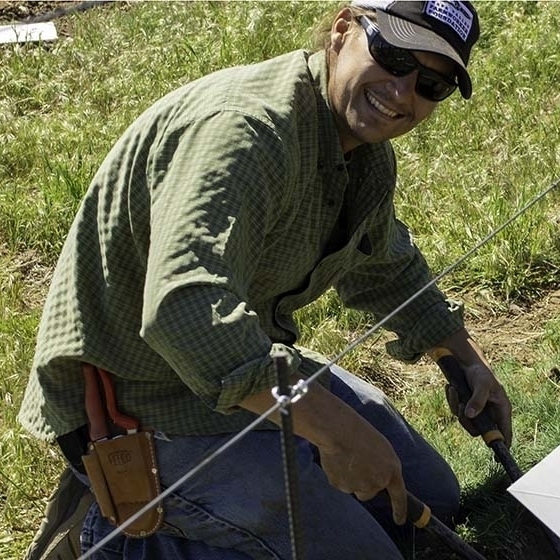Growing crop options
for the stability and resilience of Nevada agriculture
Options growing for Nevada’s fruit and vegetable crops
![]() Many of the fruit and vegetables being studied by the College, including butternut squash, were chosen because they’re what Nevada consumers want.
Many of the fruit and vegetables being studied by the College, including butternut squash, were chosen because they’re what Nevada consumers want.
![]() Story by Tiffany Kozsan
Story by Tiffany Kozsan
In the College and its Experiment Station and Extension units, researchers are actively studying fruit and vegetable varieties requested by consumers and small-scale agricultural producers. Their goal is to help producers improve yield to meet demand while diversifying which produce can be grown commercially in the harsh climates of both the Great Basin and the Mojave Desert.
Below meet some of our crops researchers and learn about their efforts










Growing Nevada's food supply and economy
"I think now, maybe more than ever, people are beginning to realize the importance of having a safe, secure food supply, grown locally, to nourish our residents. When we help our agricultural producers discover new crops and techniques, we not only help provide a local food supply, but we also help sustain our agriculture and restaurant industries, boosting our state’s economy." -Dean Bill Payne
Researchers investigate carrots to improve resistance to common crop disease
![]() Carrots may hold an answer to making crops more resistant to white mold disease. Photo by Robert Moore.
Carrots may hold an answer to making crops more resistant to white mold disease. Photo by Robert Moore.
![]() Story by Tiffany Kozsan
Story by Tiffany Kozsan
White mold disease, also known as white rot, is a common fungus that can kill fields of crops, including soybeans, peas, potatoes, lettuce, camelina, carrots and many others, within days. Harvested plants aren't safe, either, as the disease can remain in soil picked up with the produce during harvest, then attack produce post-harvest when conditions reach the right temperature and humidity during the crop's storage. The disease is not as common in Nevada due to the state's mostly dry climate, but it has been spotted in Winnemucca and is a big issue in many other states throughout the U.S. In addition, there are no known plants that are completely resistant to this cottonlike fungus.
There are, however, some crops showing promise. Carrots in particular appear to have greater resistance to the mold than other plants, and Patricia Santos and Dylan Kosma, both assistant professors in the College's Department of Biochemistry & Molecular Biology, want to know more.
"Carrots create unique compounds in the skin that might be a way to fight the fungus," said Santos, who is leading the research. "It's been shown that these compounds have a level of toxicity to this disease, but it's not well researched."
With funding from the College's Experiment Station unit, and in collaboration with Nevada Department of Agriculture Plant Pathologist Shouhua Wang, the team is studying how toxic the compounds are to the mold, what makes the compounds toxic, and how the compounds actually attack the mold.
"We're trying to ascertain how these compounds can fight off white mold disease,” Santos said. "Then we want to know how we can use this knowledge to improve the resistances of other plants."
Does hemp hold the potential to be Nevada’s next leading crop?
![]() Cherry wine hemp, a strain Extension is growing for research, is showing great potential for growth in Nevada. Photo by Lauren McGue, Extension.
Cherry wine hemp, a strain Extension is growing for research, is showing great potential for growth in Nevada. Photo by Lauren McGue, Extension.
![]() Story by Hannah Alfaro
Story by Hannah Alfaro
Hemp uses less water than many other crops, and its uses and popularity are growing. As a result, there is increasing interest in growing hemp in Nevada. Extension is now researching hemp varieties and best practices for growing it in Nevada, and offering online classes on the research findings. The work is being led by M.L. Robinson, an associate professor and horticulture specialist with Extension, with help from Extension’s Marysia Morawska, Lauren McGue and Master Gardener volunteers.
"There are really positive results that we’re seeing in similar climates to Nevada when it comes to the growing of dual-purpose hemp crops," Morawska said. "Fiber, grain, hurd and oils, to name only a few, make up a huge part of the growing hemp economy, and Nevada can be a leader in the market, but we have to find the right plant genetics that work in our region. There is so much potential in this work."
Morawska and Robinson have conducted preliminary research and have hosted introductory workshops on hemp for the last few years. With growing interest and sold-out classes, they saw the opportunity to expand the curriculum beyond basic introductory courses.
The two started growing a handful of plants in 2019 at Extension’s Botanic Gardens in Clark County to begin assessing the best practices for growing hemp in Nevada climates. Prior to the COVID-19 pandemic in 2020, with help from McGue and Extension’s Master Gardeners, the team planted 11 different varieties of hemp at the Botanic Gardens to continue to research which ones grow best in Nevada’s desert environment. As part of the process, the team is developing best practices.
Coinciding with their research, the team is developing online classes for those interested in growing hemp, to promote it as a crop for Nevada and to provide research-based information for successful production. The trainings will take producers through the hemp-growing process, including creating a small-business plan and getting proper licensing and certification.
Growing Nevada producers into market leaders
"Although hemp is a great crop in many ways, there’s still a lot of research to be done. Yes, it uses less water than, say, alfalfa, but it still uses more water than some other crops. There’s a lot of information out there on hemp, but we want to narrow down the research to see how best to grow it and make it a major industry in Nevada." -Horticulture Specialist M.L. Robinson
Sorghum studied for beer-brewing potential and public use
![]() Graduate student John Baggett, with the College, inspects sorghum at a Richardson Seeds field in Texas. Photo by Melinda Yerka.
Graduate student John Baggett, with the College, inspects sorghum at a Richardson Seeds field in Texas. Photo by Melinda Yerka.
![]() Story by Tiffany Kozsan
Story by Tiffany Kozsan
When Melinda Yerka came to the University in 2017 as an assistant professor in our College, she knew she wanted to work with fermenting sorghum. John Baggett, who earned his bachelor’s degree in Biochemistry & Molecular Biology at the University in 2015, also returned to pursue his doctorate because he wanted to study the biochemistry of fermentation. Together, and funded by $650,000 in grants, the pair are investigating new sorghum varieties emerging from Yerka’s breeding program.
As part of the College's Experiment Station unit, they are also investigating new techniques for malting, which is a pre-brewing process that helps create the desired flavor and makes brewing proceed more efficiently, and brewing to find the best process for use by local breweries.
"Sorghum is gluten free," Yerka said. "John, who previously conducted research and development with barley-based beer recipes at the Depot Craft Brewery and Distillery in Reno, had seen a demand for gluten-free beer."
The new varieties were finished in fall 2020, and the next step is malting and fermenting to check their performance and quality. The team will work with Arne Martin, owner of 40 Mile Malt in Fallon, to malt the grain prior to brewing. From there, the team will partner with local businesses, including the Depot Craft Brewery and Distillery, to have consumers taste-test the flavors.
Brewing better beer
"We’ll be fermenting these sorghum and barley varieties to see how their production environment impacts the flavor profile and makes the best beer. We also want to know how similarly barley grain and sorghum grain act during malting and brewing, as this will help us optimize methods that are specific to sorghum." -Assistant Professor Melinda Yerka